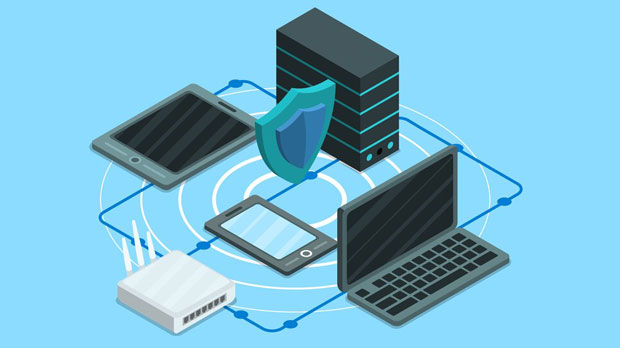Proxy static servers have become one of the most frequently discussed tools in the realm of cybersecurity, with a primary focus on their ability to provide a layer of protection for online anonymity and user privacy. This article delves into the significance of proxy static servers, exploring how they function and their role in safeguarding sensitive information in today's increasingly digital world. As cyber threats become more sophisticated and personal data becomes a prime target for malicious actors, understanding how static proxies can enhance security is crucial. This exploration covers the technology behind proxies, the benefits they provide for anonymity, and the limitations they might have in protecting privacy. Understanding Proxy Static TechnologyBefore analyzing how proxy static impacts privacy and anonymity, it’s important to understand what a proxy server is and how it works. A proxy server acts as an intermediary between a user’s device and the internet. When a user sends a request to access a website, the request is first routed through the proxy, which then forwards it to the destination. The response is received by the proxy and sent back to the user.Static proxies differ from dynamic proxies primarily in that their IP addresses remain constant over time, unlike dynamic proxies that change frequently. This permanence provides certain advantages for users seeking stable connections for activities such as web scraping, data mining, or secure browsing.The Role of Proxy Static in AnonymityOne of the key benefits of using proxy static servers is their ability to enhance online anonymity. When a user connects to the internet through a proxy server, the websites they visit only see the proxy’s IP address, not the user’s. This process effectively hides the user’s real location and identity, making it difficult for websites or online services to track their browsing behavior.This form of anonymity is particularly valuable for individuals who wish to maintain privacy while navigating the web. For example, individuals concerned with surveillance or online profiling can rely on static proxies to keep their personal information shielded from prying eyes. Additionally, static proxies allow users to bypass geographical restrictions by masking their true location, which can be useful for accessing region-restricted content or services.Privacy Protection with Static ProxiesPrivacy is increasingly becoming a key concern in the digital age. Many websites collect large amounts of personal information, including browsing habits, location data, and even demographic details. Static proxies provide a vital tool in protecting privacy by preventing websites from tracking users via their IP addresses. Since the IP address remains unchanged, it becomes more difficult for websites to correlate browsing behavior over time or between different sessions.Moreover, static proxies are used to hide users’ true IP addresses when interacting with online services that require user identification or authentication. By masking a user’s real IP, static proxies prevent data leaks, which might otherwise expose sensitive information like login credentials, account details, and transaction history.Benefits of Proxy Static for Enhanced SecurityIn addition to providing anonymity and privacy, static proxies can play a significant role in enhancing overall online security. By concealing the user’s original IP address, these proxies reduce the risk of direct attacks such as Distributed Denial of Service (DDoS) or other types of cyberattacks aimed at targeting specific IP addresses.Furthermore, static proxies contribute to security when browsing on unsecured networks, such as public Wi-Fi hotspots. In these scenarios, malicious actors might attempt to intercept users' data. Using a proxy can add a layer of encryption between the user and the internet, safeguarding sensitive information like passwords, credit card numbers, and other personal data.Limitations of Proxy Static in Privacy ProtectionWhile static proxies provide a significant boost to anonymity and privacy, it is important to acknowledge their limitations. The most notable drawback is that static proxies, by definition, maintain a fixed IP address. This can be a double-edged sword. On the one hand, having a static IP address can help in maintaining stable connections and enhancing the usability of certain applications. However, it also means that over time, the same IP address is associated with the user, which could potentially make it easier for advanced surveillance tools to track user activities.Additionally, if the proxy provider itself is not trustworthy, the user may inadvertently expose their personal data. Some proxy servers might log user activities, and if these logs are stored or shared, they can compromise the user’s privacy. This is why selecting a reliable and privacy-conscious proxy provider is critical for ensuring that personal data remains secure.Proxy Static for Commercial Use and Data ProtectionStatic proxies are also heavily utilized in business and commercial applications, where they can be employed to manage large-scale web scraping, market research, or competitive intelligence gathering. In such cases, the use of proxy static servers ensures that the business's IP address remains anonymous, avoiding detection and blocking by websites.From a privacy perspective, companies can benefit from using static proxies by ensuring that sensitive business data, such as customer information and market trends, is kept secure. Static proxies ensure that these sensitive resources are not exposed to potential threats, such as data breaches or leaks.Proxy Static vs. Dynamic Proxies: Which is Better for Privacy?When comparing static and dynamic proxies in terms of privacy and security, there are several factors to consider. Static proxies are ideal for individuals and businesses that need a consistent IP address for ongoing activities, such as logging into secure accounts, performing automated tasks, or avoiding CAPTCHA challenges. The downside is the potential risk of long-term tracking if the same IP address is exposed for too long.Dynamic proxies, on the other hand, change IP addresses regularly, offering an additional layer of privacy by making it difficult for websites to track activities across sessions. However, this also means users may face more frequent disruptions in service, and certain activities that require a persistent connection might be hindered.For users seeking a balance between stable connections and privacy protection, a combination of both static and dynamic proxies might be the most effective solution. By rotating between proxies, users can benefit from both anonymity and a degree of unpredictability in their online presence.Proxy static servers play an essential role in safeguarding online anonymity and privacy in today's interconnected world. By hiding the user’s real IP address and masking their location, static proxies provide a vital tool for protecting sensitive information, ensuring secure communication, and reducing the risk of cyberattacks. However, users must be aware of the potential limitations, such as the risk of long-term tracking and the importance of selecting a trustworthy proxy provider. Overall, static proxies offer significant value for those seeking to enhance their privacy and security, both for personal use and in business contexts.
Sep 20, 2025



































































